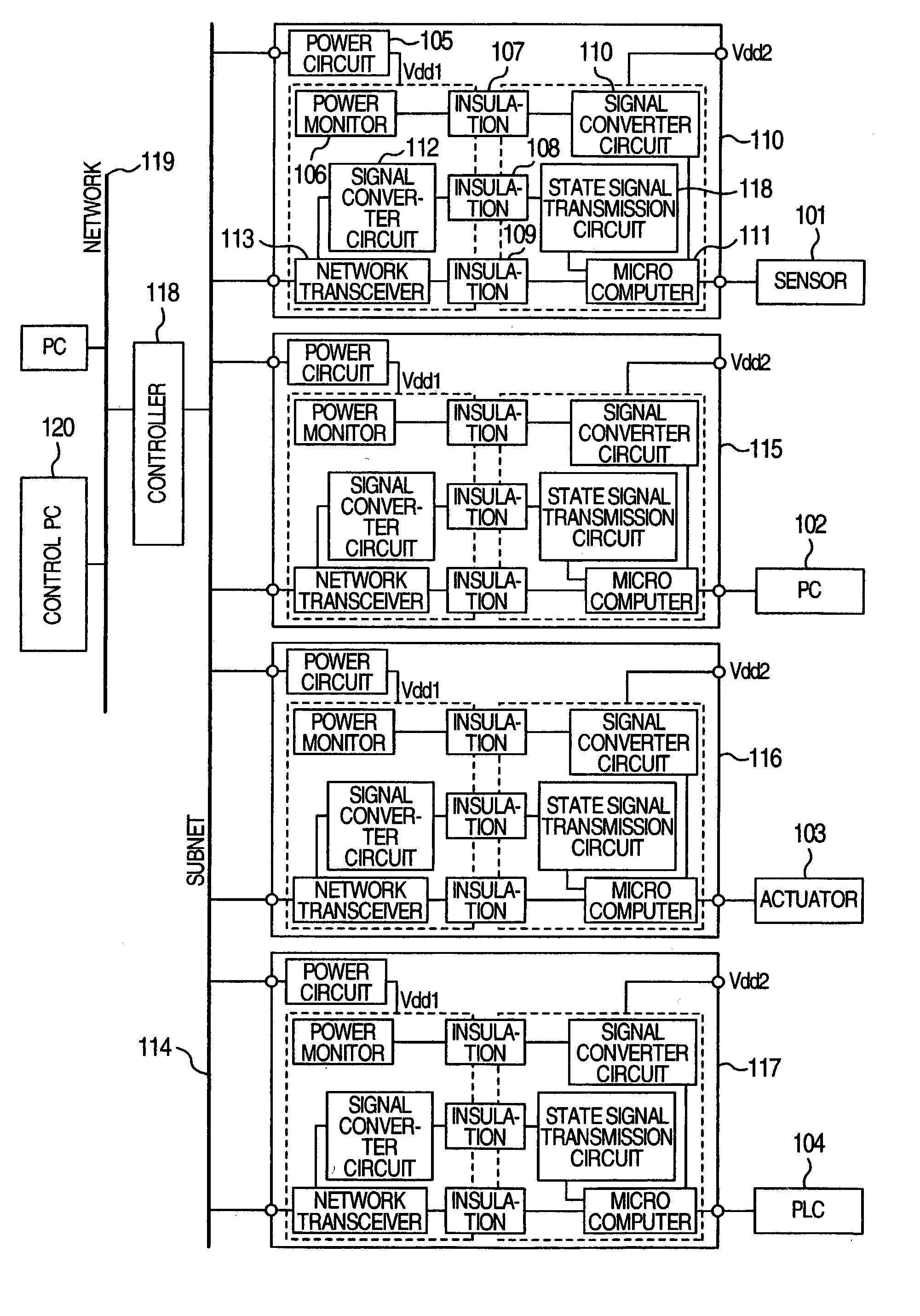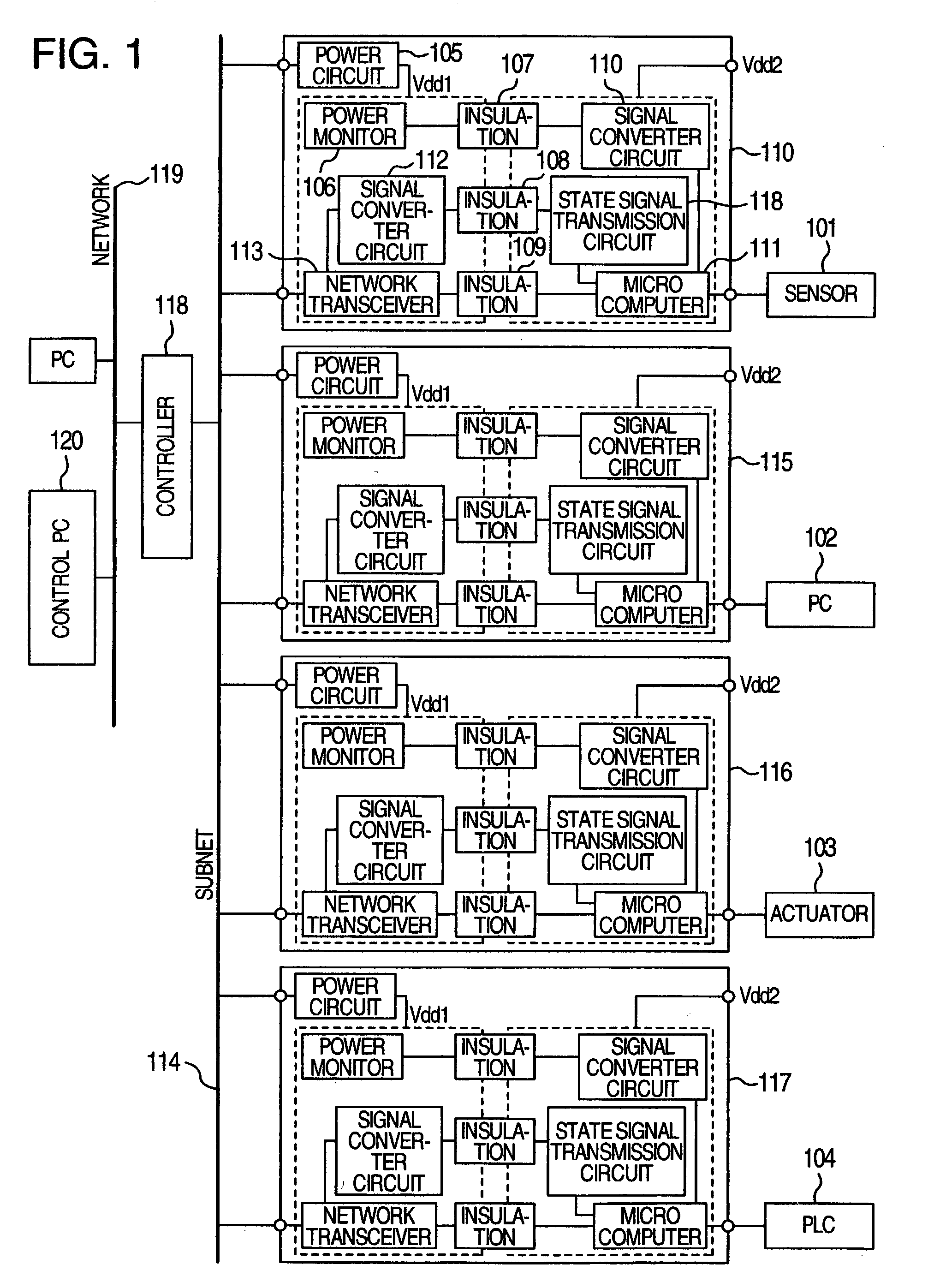Interface device and information processing system
a technology of information processing system and interface device, which is applied in the direction of pulse technique, program control, instruments, etc., can solve the problems of system not being formed on the same semiconductor substrate, incorrect information cannot be transmitted to the signal processing device, and large current consumption
- Summary
- Abstract
- Description
- Claims
- Application Information
AI Technical Summary
Benefits of technology
Problems solved by technology
Method used
Image
Examples
Embodiment Construction
[0025]FIG. 1 shows a distributed control system according to this invention. In this distributed control system, various field devices including a sensor 101, a personal computer (PC) 102, an actuator 103 and a programmable logic controller (PLC) 104 are connected to a network 114 through interface devices 100, 115, 116, 117. The interface devices 100, 115, 116, 117 may be formed independently of the sensor 101, the personal computer 102, the actuator 103 and the programmable logic controller 104, respectively, or each field device may have an interface device built therein. The network 114 is further connected through a controller 118 to a higher-order network 119 connected with a control personal computer (control PC) 120 and the like. In addition to the configuration of the distributed control system described above, various system configurations are possible according to the hierarchy and type of the network.
[0026]In the distributed control system configured in this way, the who...
PUM
 Login to View More
Login to View More Abstract
Description
Claims
Application Information
 Login to View More
Login to View More - R&D
- Intellectual Property
- Life Sciences
- Materials
- Tech Scout
- Unparalleled Data Quality
- Higher Quality Content
- 60% Fewer Hallucinations
Browse by: Latest US Patents, China's latest patents, Technical Efficacy Thesaurus, Application Domain, Technology Topic, Popular Technical Reports.
© 2025 PatSnap. All rights reserved.Legal|Privacy policy|Modern Slavery Act Transparency Statement|Sitemap|About US| Contact US: help@patsnap.com



